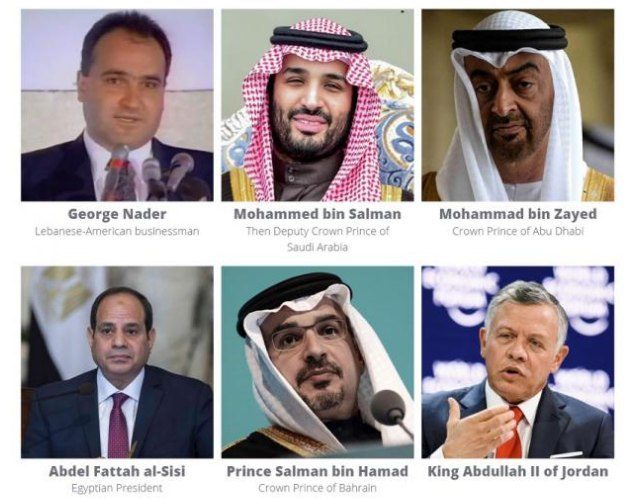Mohammed bin Salman is Now One of Us – Part Two
We follow the story of Mohammed bin Salman, who has now become one of us, as he, in an unprecedented and noteworthy development beyond the crown prince position of Saudi Arabia, was appointed as the head of the cabinet and prime minister in the final days of October 2022.
He received this position practically as a birthday gift and in mid-October, with a new alliance with Vladimir Putin, he implemented a strange oil program to shake the markets and raise prices by reducing oil production. As we mentioned at the end of the first part of this narrative, we continue the story of bin Salman with his and Saudi Arabia’s political journey reaching the ominous gates of the Trump era in the second part.
Take care of yourselves
The days of Barack Obama’s presidency in America, especially during his second term, were tough for many Middle Eastern politicians. If we consider Netanyahu in Israel as a symbol of this confrontation, there is no doubt that the Arab Spring and its shocks seriously transformed the political landscape of the Middle East and placed the Arab leaders and Gulf sheikhs in a special situation. Events in Tunisia spilled over into Egypt, Libya, Syria, and Yemen, and Arab leaders were overthrown one after another.
Meanwhile, Obama’s administration’s efforts to control Iran’s nuclear program were progressing successfully following the events of 2009-1388 in Iran, and parallel to the developments in North Africa and West Asia, Iran was on a path of dialogue with America from the beginning of 2013.
We need to return to the media figure we introduced in the first part of our narrative. Thomas Friedman, in 2014, with the emergence of the first steps of the Iran-West nuclear agreement and the serious dialogue scenes between Iranian officials and Westerners, especially Americans, conducted an extensive interview with Barack Obama, which should be considered a historical turning point in the media reflection of Obama’s and his team’s policy towards the Middle East. This interview was conducted at a time when the first round of the nuclear deal had been completed, and on the other hand, ISIS had emerged and turned Iraq and the Levant upside down.
Obama referred to Israel’s concerns about the nuclear deal, emphasizing the importance of diplomacy and the superiority of the deal over any other option for controlling Iran, but he had a different tone regarding Saudi Arabia and the countries Friedman described as Sunni Arab. Obama sent an unprecedented message to the Gulf Arab sheikhs: The serious threat to you is not an Iranian attack and occupation; the greatest and primary danger is internal dissatisfaction in your countries.

He warned the Arab rulers to address the cultural and social situation within their countries. Obama told Friedman that military aid and cooperation with these Arab rulers are pursued to counter external threats, yet he stated that what is difficult is the dialogue with these rulers about the internal situations of their countries and addressing the diverse grievances of their people.
Naturally, the Saudi, Emirati, and Bahraini rulers did not easily digest these words. Netanyahu, on the other hand, was beating the drum of confrontation with Obama, and the groundwork for the publicizing of secret partnerships was being laid. The fact that the American president was telling the Arabs to address their internal affairs and also to solve Middle Eastern issues through dialogue among themselves pushed these partners to the brink of planning for the future.
The Sinister Influence of Saudi Arabia
It was the summer of this year when Ahmad Abouammo, a Lebanese-American citizen and former Twitter employee, finally saw his case come to an end after years and was sentenced in court. He was accused of spying for the Saudi security structure and transferring information about thousands of users to bin Salman’s subordinates.
Specifically, Badr Al-Asaker, a famous and influential Saudi security figure who is practically one of the main players in the Saudi royal family’s security structure, executed this program by hiring Abouammo and paying large sums to implement bin Salman’s orders. At least two members of the network created by Badr Al-Asaker managed to escape to Saudi Arabia after the exposure of this Twitter-based espionage network.
The power of the Saudi lobby and the start of bin Salman’s cosmetic programs significantly curbed criticism and accusations against him, and once again, as in past cases, no serious action was taken to limit the presence of Saudis in America.
With Abouammo’s identification and arrest and the publication of news about Saudi Arabia’s infiltration network in social media, what did not happen was the shutdown of Saudi Arabia’s lobbying activities in America. The influence of the Saudi royal family in America was so great that there was not much the Obama administration could do, which was simultaneously battling ISIS, dealing with Netanyahu, negotiating with Iran, and addressing the consequences of Gaddafi’s fall and aiding Syrian rebels against Bashar al-Assad.

American Republicans had serious ties with the Saudi royal family, and now, in 2022, we know that the Saudi government’s connections with a network of retired American generals are very serious. Here, we must do something like all dictators: find a journalist.
The Journalist
Saud al-Qahtani is originally a journalist who began his career in publications and quickly rose through the ranks to reach important positions in public opinion management within the Saudi government. His rise can be traced back to the late previous decade when he became the media control manager in the Saudi government. He was quickly attracted to bin Salman, and al-Qahtani rapidly expanded his media and online activities.
He became a constantly active figure in the internet world, interacting with social networks and engaging with users, as this was his profession and expertise.
The young Saudi became a prominent and regular figure among hacker communities, and now everyone in the world knows his username. Which username? His username in the hacker internet forum from the years 2014 and 2015, under which he signed special lobbying contracts with American lobbying institutions on behalf of bin Salman.
The background and supportive base of that Twitter infiltration network and lobbying programs should be considered with the official and serious presence of al-Qahtani in the famous bin Salman institution, known as Misk for short. Interestingly, the fugitive members of the infiltration network who escaped from federal agents in America and went to Saudi Arabia were officially employed by this institution and continued their lives comfortably.
We Reach the Trumpian World Border
In 2015, those disillusioned with Middle Eastern developments during the Obama era reached a new company. The final connections between Arab rulers and Israelis were becoming apparent, and the nuclear agreement with Iran had increased the anger of these partners. This is where the story of bin Salman and his friends and partners intertwines with another crown prince, who, now in 2022, ended his crown prince tenure earlier than bin Salman and, thanks to the death of the Emir of the UAE, became the ruler of that country. Mohammed bin Zayed is another part of our narrative, and his partnership in the Yemen story with bin Salman is one of the strangest parts of Middle Eastern history.
Nevertheless, for the 2015 story, we reach the beginning of a program that led to infiltration in American election campaigns, leaving several prisoners in America from this process. Interestingly, the Israeli structure connected to the Saudi, Emirati, and Bahraini crown princes controlled its depth of participation well, and special agents became the connectors to the Arabs.
The meetings of 2015 in the Middle East concluded with meetings in New York, and serious infiltration occurred in the circle of the controversial and divisive American candidate. Donald Trump was hanging onto the Arabs, with an interesting meeting narrative in the Middle East. Stay tuned for the next report with people whose pictures you see together.
The previous part of this article titled ‘Mohammed bin Salman is Now One of Us’ and the next part titled ‘Mohammed bin Salman is Now One of Us – Part Three’ have been published in Iran Gate.
Exclusive and Recommended Content from Iran Gate
- Saudi Arabia Begins Purchasing Weapons from Israel
- Peace Diplomacy Sacrificed to Internal and External Neo-Fields

